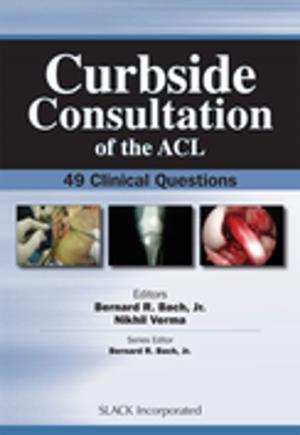Interprofessional Evidence-Based Practice
A Workbook for Health Professionals
Nonfiction, Health & Well Being, Medical, Allied Health Services, Occupational Therapy| Author: | ISBN: | 9781630910990 | |
| Publisher: | SLACK Incorporated | Publication: | March 15, 2016 |
| Imprint: | SLACK Incorporated | Language: | English |
| Author: | |
| ISBN: | 9781630910990 |
| Publisher: | SLACK Incorporated |
| Publication: | March 15, 2016 |
| Imprint: | SLACK Incorporated |
| Language: | English |
Interprofessional Evidence-Based Practice: A Workbook for Health Professionals promotes active, team learning of interprofessional evidence-based practice (EBP). This text is distinctive in that it departs from the tradition of EBP occurring from a single disciplinary perspective. Interprofessional EBP is described in terms of a dynamic team process that blends the patient’s preferences and values, and the expertise of practitioners from multiple disciplines, and incorporates multidisciplinary evidence. Teams learn to use the nine phases in the interprofessional process to challenge current disciplinary paradigms and biases to create an integrated approach to patient care, health care delivery, or population health. Drs. Penelope Moyers and Patricia Finch-Guthrie focus on developing and fostering collaboration between academic institutions and health care organizations so that students and faculty participate on interprofessional teams with mentors and staff from a health care organization. Interprofessional Evidence-Based Practice: A Workbook for Health Professionals also addresses the communication and cross-organizational factors important for supporting the work of the team. Common team and mentoring issues encountered in EBP are clearly articulated, along with the iterative problem-solving approaches necessary to mitigate temporary “stumbling blocks.” The text provides detail for developing and launching an interprofessional EBP program that goes beyond the evidence process to include implementation science to support practice change. Approaches for developing partnerships for supporting this type of program between universities and health care institutions are contained within, including sample partnership agreements and resource-sharing strategies. Inside Interprofessional Evidence-Based Practice: A Workbook for Health Professionals, each chapter includes performance objectives, key words, checklists, and materials and resources that an interprofessional team can use. PowerPoint lectures, mentor newsletters, forms, tools, and other resources are included on a companion website to guide team learning about key EBP topics, as well as to support the program coordinators and team mentors in their work with the interprofessional teams. Interprofessional Evidence-Based Practice: A Workbook for Health Professionals is the go-to resource for those who want to engage in interprofessional EBP, and for leaders who want to develop and implement an interprofessional EBP program.
Interprofessional Evidence-Based Practice: A Workbook for Health Professionals promotes active, team learning of interprofessional evidence-based practice (EBP). This text is distinctive in that it departs from the tradition of EBP occurring from a single disciplinary perspective. Interprofessional EBP is described in terms of a dynamic team process that blends the patient’s preferences and values, and the expertise of practitioners from multiple disciplines, and incorporates multidisciplinary evidence. Teams learn to use the nine phases in the interprofessional process to challenge current disciplinary paradigms and biases to create an integrated approach to patient care, health care delivery, or population health. Drs. Penelope Moyers and Patricia Finch-Guthrie focus on developing and fostering collaboration between academic institutions and health care organizations so that students and faculty participate on interprofessional teams with mentors and staff from a health care organization. Interprofessional Evidence-Based Practice: A Workbook for Health Professionals also addresses the communication and cross-organizational factors important for supporting the work of the team. Common team and mentoring issues encountered in EBP are clearly articulated, along with the iterative problem-solving approaches necessary to mitigate temporary “stumbling blocks.” The text provides detail for developing and launching an interprofessional EBP program that goes beyond the evidence process to include implementation science to support practice change. Approaches for developing partnerships for supporting this type of program between universities and health care institutions are contained within, including sample partnership agreements and resource-sharing strategies. Inside Interprofessional Evidence-Based Practice: A Workbook for Health Professionals, each chapter includes performance objectives, key words, checklists, and materials and resources that an interprofessional team can use. PowerPoint lectures, mentor newsletters, forms, tools, and other resources are included on a companion website to guide team learning about key EBP topics, as well as to support the program coordinators and team mentors in their work with the interprofessional teams. Interprofessional Evidence-Based Practice: A Workbook for Health Professionals is the go-to resource for those who want to engage in interprofessional EBP, and for leaders who want to develop and implement an interprofessional EBP program.















